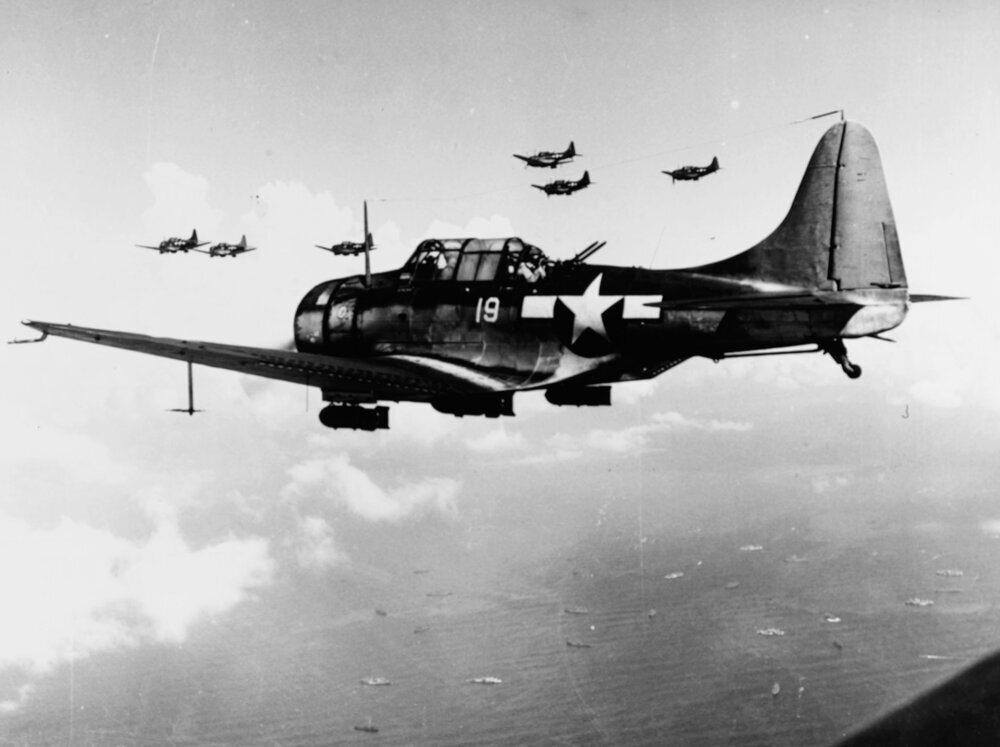3-31-1944 Dated - Assault on “Yap” - U.S.S. Enterprise CV-6 Aerial Reconnaissance Photograph











3-31-1944 Dated - Assault on “Yap” - U.S.S. Enterprise CV-6 Aerial Reconnaissance Photograph
Size: 4 x 5 inches
Letter of Authenticity included.
Dated March 31, 1944 this original ‘CONFIDENTIAL’ World War II USS Enterprise aerial reconnaissance photograph is marked “Yap” and was taken by a U.S.S. Enterprise air group pilot and is also labeled with “CV6”. Taken with a K-20 aerial camera, the K-20 camera was originally designed as an all-purpose aerial camera and was used widely throughout World War II for vertical mapping, photography, and all types of aerial reconnaissance intelligence and bomb damage assessment.
Following the pilots combat mission in the area, and their safe landing aboard the deck of the USS Enterprise this photograph was then developed aboard the carrier’s photographic development crew and was marked, used, and examined by USS Enterprise pilots (such as Lt. Moore) and other USS Enterprise high ranking commanders and officers.
USS Enterprise and Yap:
G5-1. On 7 March, ENTERPRISE headed once more for the Southwest Pacific where her planes provided air support, combat air patrol and anti-submarine patrol for the landings on Emirau. She then joined Task Force 58 and participated in strikes against Peleliu and Koror in the Palau Islands, Yap and Ulithi in the western Carolines and, as the group retired eastward, against Woleai.
G6-3. After a brief stop at Saipan, ENTERPRISE sent fighter sweeps and photographic missions against Yap and Ulithi on 6, 7 and 8 September, followed by strikes against Malakai Harbor in the Palau Islands on 10 and 11 September.
G6-13. After the strike of 19 November, ENTERPRISE retired eastward sending planes against the airfields at Yap before anchoring in Ulithi on 22 November. Five days later, she departed for Pearl Harbor arriving 6 December for two weeks' availability at the Navy Yard where new four-bladed propellers were fitted in an effort to reduce vibration during high speed turns. The new propellers were successful and on 24 December she departed for the Philippines.
Comprehensive WWII combat history of USS Enterprise (CV-6):
The Yorktown class aircraft carrier, USS Enterprise (CV-6) was commissioned at Newport News, Virginia, on May 12, 1938. Relocating to the Pacific, she was at sea during the Japanese Attack on Pearl Harbor on December 7, 1941. Three days after, she became the first U.S. Navy warship to sink a Japanese warship, submarine I-70, and later that month participated in the Wake Island expedition. In April, Enterprise covered the Dootlittle Raid on Japan and participated in the Battle of Midway that June, where her planes helped sink three Japanese aircraft carriers and a cruiser. During the Guadalcanal Campaign, she covered the landings and participated in the battles of Eastern Solomons and Santa Cruz Islands. Despite being damaged in both battles, she launched aircraft to assist the ships involved in the Naval Battle of Guadalcanal. In late 1943 and early 1944, Enterprise took part in the Gilberts and Marshall invasions and air attacks on the Japanese in the Central and Southern Pacific. In the summer of 1944, she participated in the Marianas operation and the Battle of the Philippine Sea, followed with the largest naval battle in history, the Battle of Leyte Gulf in October.In February 1945, Enterprise took part in the Iwo Jima invasion, then raids on the Japanese home islands and the Okinawa campaign in April. Due to damage received by two kamikaze attacks in April and May, she returned to the United States with the distinction of being the most decorated U.S. Navy warship during the war. Following Japan's surrender, she helped transport U.S. servicemen back to the United States. Decommissioned in February 1947, Enterprise was re-designated (CVA-6) in October 1952 and then to (CVS-6) in August 1953. Despite efforts to turn her into a museum ship, she was sold for scrapping in July 1958.